#chagall coded
Explore tagged Tumblr posts
Text
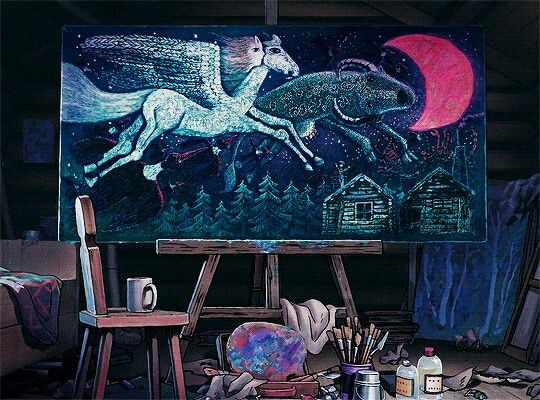
#studio ghibli#ghibli films#kiki delivery service#chagall coded#witchy art#witchy aesthetic#witchy woman
32 notes
·
View notes
Text
Lily and James — the alchemical Queen and King. Lily is the main symbol of the entire saga.
In Harry Potter, there are two levels - the mundane and the symbolic. On the mundane level, Lily is a character with her own strengths and weaknesses. On the symbolic level, Lily is the main symbol of the entire saga. Perhaps that's why there's so little talk about her because symbolically Lily is what everyone strives for, everyone searches for but cannot find. Harry learns more about Lily only before the final battle, and there's a reason for that.
It's no secret that HP books are heavily laden with alchemical and Christian symbolism. I'm not religious, and to me, all these symbols are just cultural codes that have had a significant influence on almost all classic literature and art.

Philipp Otto Runge, Chagall, Goethe — they're all alchemical codes
Firstly, alchemy is not about literally turning lead into gold, it's a path of spiritual development, a path of transformation, a "hero's journey," the journey of the Son returning to the Father. Alchemical transformation is described in the text "The Chymical Wedding of Christian Rosenkreutz." This is the third manifesto of the Rosicrucian Brotherhood.
So, lilies are a very ancient symbol.
According to Jewish legends, the lily grew in Eden just at the time of Eve's temptation by the devil and could be defiled by him, but even amid temptation, it remained as pure as it was, and no dirty hand dared to touch it. In early medieval depictions, Christ was placed against a backdrop of lilies or in the lily flower, seen as a symbol of the Virgin Mary. The orange lily often symbolizes the blood of Christ.
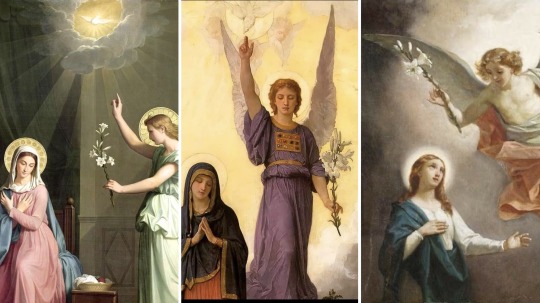
Symbolically, Lily is the love of God, a divine spark, and the blood of Christ itself, which was shed in the name of redemption and salvation to atone for the sins of all humanity. And what is the blood of Christ? In Christian tradition, the blood of Jesus Christ is a symbol of the life-giving and saving spirit of God.
By the way, lilies and roses were often confused in translations, and symbolically they are the same. Many suspected that the Rosicrucians' rose is a stylized version of the Egyptian and Indian flowering lotus, and the lotus has often been considered a water lily (they are different, but symbolically they merged). But calling the main character Rose would be too dull and obvious a reference.
Lily - symbolically, she is both the mother of Christ and the Spirit of God herself, the bearer of divine love, to which all seekers are drawn. This is not the only meaning, but for now, it's enough.
God is love, says John the Apostle. (Remus John Lupin, hehe. It was absolutely unnecessary to know his middle name. It's intentionally inserted because each of the marauders, except Sirius, by name signifies one of the disciples closest to Christ. Sirius is a separate story, he signifies something completely different.)
And who is drawn? Well, primarily we see two - James and Snape.
One of the most important things we learn about James is that he's a deer. The deer is a well-known symbol. In myths and folk beliefs, the deer was associated with the soul's aspiration to heaven and purification.
"As the deer pants for streams of water, so my soul pants for you, my God" Ps. 42: 1
In the Alexandrian "Physiologus," there's an ancient enmity between the stag and the serpent. The serpent hides from the foe in the clefts of the earth, but the stag, with the help of water, draws out the serpent and defeats it. (Water has always been a symbol of the serpent, even in Slytherin's element water, but the stag fights the serpent not with ordinary water but with the water of baptism. The snake has another important meaning for alchemy, but more on that later.)


Snape belongs to the Serpent, to secret knowledge, occult knowledge, "philosophical" reason, dark magic, which has always been contrary to the divine nature in Christian understanding and originated from the devil. James belongs to the Lion and the Deer.
The Lion is a typical alchemical symbol. Also, the Red Lion is Christ. Gryffindor embodies the soul's aspiration towards light and transformation, towards salvation. By the way, St. Godric (the hermit) also had his own pet deer, which he saved.

The deer seeks love, the spirit of God, the divine spark, God Himself, and in this persistent pursuit is shown James's path, as a seeker and as an alchemist. The Potters — if not alchemists themselves, then at least from the lineage of alchemists — the Peverells (The symbol of the Deathly Hallows is an alchemical-masonic symbol). And this means that the Potters are at least seekers; in their souls, there is a desire to find the divine and undergo transformation. The Potters have a strong hatred for the 'serpentine essence' of evil, and this is what needs to be transformed. (By the way, the graveyard is located near St. Jerome's Church. Besides translating the Bible into Latin, Jerome also healed and tamed a lion).

Masonic-alchemical symbol. Symbol of the philosopher's stone. Symbol of the Deathly Hallows. Solve et coagula is a principle of alchemy meaning "dissolve and coagulate".
An alchemist is a gardener, and this is another interesting reference to James and Lily. The way James tries to find an approach to Lily is an alchemical process. The alchemist tends to the Garden. In Vrisvik's Great Work (the Magnum Opus), it appears as the Garden of the Wise. The Gates to the Garden of the Wise for the Chosen become the process of dissolving "our Substance." James manages to approach Lily only when he dissolves his Ego. The Ego is the main enemy on the path to transformation.
The tradition of "hermetic gardening," that is, "cultivating the flowers of Wisdom in one's garden," becomes a leading line in alchemical symbolism. James cultivates wisdom.
While Snape cultivates "dark knowledge," although his soul also strives for light and love. But Snape is still too captured by his Ego, too captivated by base emotions, a thirst for revenge, recognition, or power, a craving for "secret knowledge." He cannot resist it, no matter how much he may strive for Lily, for the divine transformation of his spirit, and James, still dwelling in his Ego, instead of showing mercy to Snape, pushes him further away. The stag fights the serpent, but God is love. Ultimately, Snape temporarily closes off the paths of alchemical transformation for himself.

The Rebis is the end product of the alchemical magnum opus or great work. The lion must dissolve the serpent. Hermetic gardening. The alchemical wedding: the Queen and the King.
But besides all this, the deer is also a symbol of eternal renewal and victory over death ("The last enemy that shall be destroyed is death" 1 Corinthians 15:26 ). A symbol of Christ. His constantly renewing antlers represent eternal life.
In the original Greek of the New Testament, the names Jacob and James are variants of the same root—Yaaqob. James is an active force, a seeker, an investigator, a supplanter. James the Great was of a rather impulsive character, but everyone was also amazed by his courage, he was the only one who acknowledged Christ as the Messiah. And he is the only apostle whose death is described in the New Testament. He dies at the hands of King Herod, a cynical and evil king who was willing to murder babies for his purpose. James also dies at the hands of Voldemort, who is willing to kill a baby for his purpose.
Moreover, it was Saint James who was considered the heavenly patron of alchemists. His tomb was located in Santiago de Compostela, which was the oldest center of adepts. It was there, in 1378, after twenty years of unsuccessful attempts to decipher the Book of Hieroglyphic Figures, that Nicolas Flamel, the most famous alchemist of the Middle Ages, went. By the way, Shell Cottage... the scallop shell is a symbol of the apostle James and the "trademark" of the Way of St. James. Shell Cottage is also alchemical. It is there that Harry sees the symbol of the Deathly Hallows around Lovegood's neck.
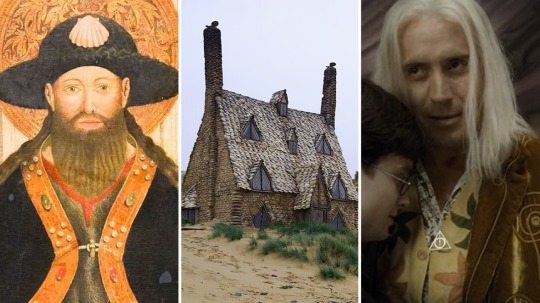
James is a seeker. Lily is a symbol of the divine spirit, sparks, transformation. That to which all must ultimately come, that which must change in our world in the image of God. But for now, our world is seized by evil, by the antichrist. To defeat death means to defeat the antichrist in one's soul.
James finds Lily. The Soul finds the Spirit. The Spirit descends into the Soul. The King and Queen marry—and a new life is born, another hero capable of defeating the evil that has engulfed the world, capable of cleansing the world of evil. The connection between Harry and Christ is no secret to anyone.

The power of love conquers death. A rune appears on Harry's forehead—Sowilo rune—the victory rune, the sun rune, the irreversible rune. It symbolically serves as the key to the world of Alfheim—the world of the light elves, that is, the bright ideas, the prototypes of the buddhial plane, the ideality in this world.
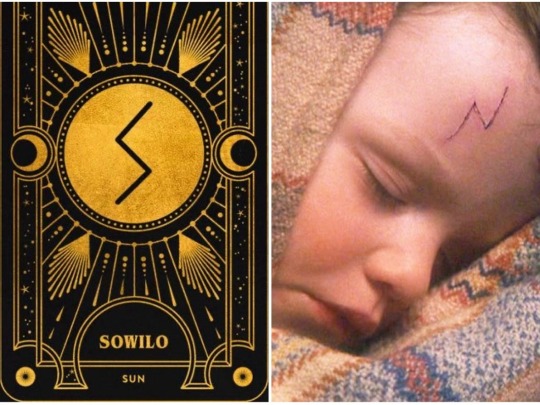
The key to God. Harry becomes marked. His scar is a reminder to him that he came into this world not just by chance, but to destroy evil. And coming into this world, materializing, a person invariably receives a particle of the antichrist within himself. That's how this world works. Evil is in the soul of each of us, and through the Great Work, a person must purify himself.
And none can live while the other survives, because they mutually exclude each other by their very nature. Christ and antichrist.
But Harry has a difficult path ahead, the path of the Great Work before he can achieve victory. And that will be the theme of all 7 books, 7 years — exactly 7 days is the duration of The Chymical Wedding of Christian Rosenkreutz for the transformation oh his soul, for victory over death.
135 notes
·
View notes
Text
Q&A with Kerry Wallach
The author of Traces of a Jewish Artist discusses Rahel Szalit, Szalit's relationship to other Jewish artists of her time, and more.
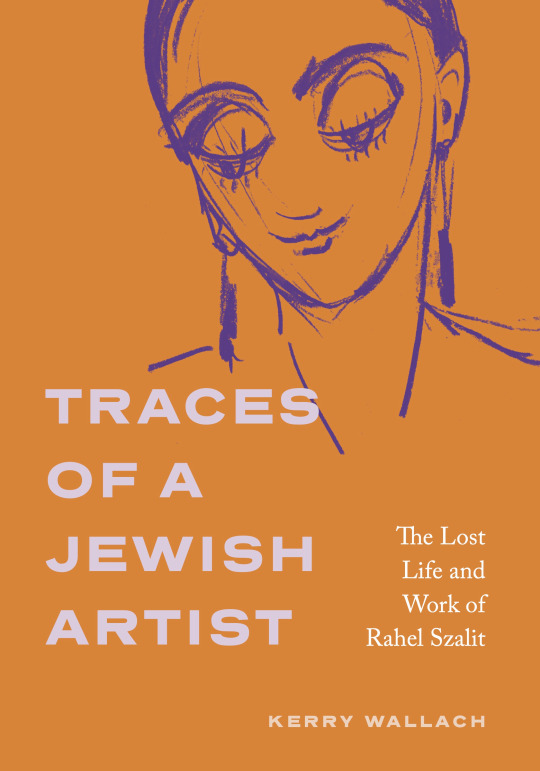
What made you want to write a book about Rahel Szalit?
I first discovered Rahel Szalit while doing research in Berlin archives. I kept finding her artwork in newspapers from the 1920s, but there wasn’t much information available about the artist herself. Her images enchanted and haunted me, and I couldn’t stop wondering about the person who created them. Like so many who were murdered in the Holocaust, Szalit’s story had never been told at length. I realized that if I didn’t tell her story, no one would.
How did Szalit differ from other women artists of her time?
Rahel Szalit (née Markus; also Szalit-Marcus; 1888–1942) came to Germany as an outsider from Eastern Europe with a working-class background. Many German women artists in the early twentieth century had middle-class backgrounds and were supported financially by their families or husbands. Szalit couldn’t afford enrollment fees for art academies, though she eventually learned painting and lithography. Yet no matter how successful she became, Szalit’s situation always remained precarious. She made ends meet by giving lessons in drawing, painting, and fencing. Probably the biggest difference between Szalit and most of her female contemporaries is that Szalit was relatively successful in Jewish circles, perhaps even more so than in mainstream artists’ circles. Szalit is known for lithographic prints, and it makes sense to compare her with Käthe Kollwitz, who likewise depicted impoverished members of the working class. Around 1927, Szalit became active in the Association of Women Artists in Berlin. Through this group, she exhibited alongside artists including Käthe Kollwitz, Lotte Laserstein, Renée Sintenis, and Milly Steger. Many depicted women as subjects, though only a few (such as Julie Wolfthorn) were known for portraying Jewish subjects.
What did Szalit have in common with other Jewish artists?
Because of her personal connections to Eastern Europe (Lithuania, Poland), Szalit’s work conveyed a sense of authenticity that was in demand. She contributed to the Jewish Renaissance in Germany alongside Jakob Steinhardt and Ludwig Meidner, who—like Szalit—depicted Jewish subjects in an Expressionist style that emphasized distorted, angular shapes and powerful colors. In fact, Szalit was one of only a handful of women mentioned in studies of Jewish art of this period.
What was Szalit's relationship to modern art movements?
Both Expressionism and New Objectivity were important for Szalit’s career in Germany. Whereas many of Szalit’s lithographic illustrations from the early 1920s experiment with an Expressionist style, many of her later paintings and drawings offered realistic portraits of social types more in line with New Objectivity. Additionally, we know Szalit was friends with painter Karl Hofer and other artists in his networks. In 1933, Szalit fled Germany for France, where she became affiliated with the School of Paris. Here she exhibited with Marc Chagall, Eugen Spiro, Emmanuel Mané-Katz, Chana Orloff, and other Jewish artists, including many who hailed from Eastern Europe. Szalit was later included in Hersh Fenster’s Yiddish memorial volume, which commemorated over eighty Jewish artists of France who died in the Holocaust. In the epilogue to my book, I discuss how Szalit—whose life and work spanned several countries and movements—could be claimed and remembered.
Traces of a Jewish Artist: The Lost Life and Work of Rahel Szalit is now available from Penn State University Press. Find more information and order the book here: https://www.psupress.org/books/titles/978-0-271-09559-2.html. Save 30% with discount code NR24.
#Rahel Szalit#Szalit#Art#Art History#Jewish Art#Judaism#Gender Studies#LGBTQ#LGBTQ Studies#PSU Press#Penn State University Press
1 note
·
View note
Text
SCUOLA: “A NATALE PUOI”, QUARTA EDIZIONE A CAIAZZO TRA EMOZIONI, CULTURA E TRADIZIONE

Manifestazioni al via nella sede centrale dell’IC “Aulo Attilio Caiatino” con l’accensione dell’albero di Natale.
CAIAZZO - L’Istituto Comprensivo Aulo Attilio Caiatino di Caiazzo (CE) si prepara a incantare ancora una volta il territorio con la IV edizione dell’evento “A Natale puoi…”, un ciclo di manifestazioni che promette di far vibrare il cuore di grandi e piccini, grazie a momenti di condivisione, arte e riflessione.
Si parte lunedì 9 dicembre alle ore 16:30 con l’attesissima cerimonia “Ti metto in luce”: l’accensione dell’albero di Natale, che trasformerà il cortile della sede centrale in un luogo di magia e incanto. Un appuntamento reso ancora più speciale dalla partecipazione della giornalista e inviata Daniela Volpecina, e dalla guida della dirigente scolastica Silvana Santagata, da sempre promotrice di iniziative che uniscono cultura e comunità. Nell’occasione dell’evento verrà presentata e scoperta una riproduzione in ceramica del celebre dipinto “Il violinista verde” di Marc Chagall, pittore russo appartenente alla Scuola di Parigi, realizzato 100 anni fa. L’opera è stata creata dagli alunni della Scuola Secondaria di Primo Grado nell’ambito di un progetto PON, coordinati dalla professoressa Filomena Puorto. Presente e si esibirà per l’occasione la Corale di Dragoni PF PoliFolli pazzi per la Musica, diretta dal Maestro Caterina Di Lorenzo.
Il ricco calendario proseguirà con eventi imperdibili, tra cui il tradizionale Concerto di Natale che si terrà venerdì 20 dicembre alle ore 18:00 nella suggestiva cornice della Cattedrale in Piazza San Stefano. Ma la magia non finisce qui. Durante tutto il periodo natalizio, l’Istituto Comprensivo si animerà con un fitto programma di iniziative, distribuite nei vari plessi scolastici, per celebrare il Natale in tutte le sue forme e significati:
10 dicembre - ore 17:30 a Piana di Monte Verna accensione dell’albero e arrivo di Babbo Natale;
17 dicembre - ore 16:30 a Caiazzo (Scuola Primaria) Corale in Cattedrale;
18 dicembre - una giornata ricca di emozioni: ore 10:00 a Cesarano recita della Scuola dell’Infanzia "Caro Gesù ti scrivo"; ore 10:00 a Castel Campagnano (Scuola dell’Infanzia e Primaria) rappresentazione "La Natività" nella Chiesa di Santa Maria ad Nives; ore 10:30 a San Giovanni e Paolo (Scuola dell’Infanzia e Scuola Primaria) Tombolata e saluti dei bambini e ore 15:00 a Squille recita della Scuola dell’infanzia con mercatino natalizio;
19 dicembre - ore 9:30 manifestazione presso il plesso della Scuola dell’Infanzia in via Astolfi; ore 10:30 a Cameralung canti natalizi a cura della Scuola Primaria; ore 11:00 a Piana di Monte Verna inaugurazione dei mercatini natalizi che resteranno aperti fino al 21 dicembre (ore 16:30-21:00) e ore 14:30 a Ruviano canti e poesie di Natale della Scuola dell’Infanzia e della Scuola Primaria;
20 dicembre - ore 9:30 a Caiazzo recita di Natale “È accaduto un fatto strano!” della Scuola dell’Infanzia con canti e poesie presso l’Aula Magna della Scuola Secondaria di I Grado;
21 dicembre - ore 9:30 a Ruviano proiezione del cortometraggio “Stringimi più forte” realizzato nell’ambito del progetto PNRR "Non uno di meno".
“Un’occasione per condividere gioia, riflettere sull’attualità e riscoprire il significato della solidarietà e della pace” - ha dichiarato la dirigente scolastica Silvana Santagata, invitando tutta la comunità a partecipare – Non perdete questa straordinaria opportunità di vivere insieme la magia del Natale”.
Per ulteriori dettagli, consultate il QR code presente nella locandina ufficiale. Si ringrazia il Vivaio di Stefano Marrone di Piana di Monte Verna.
0 notes
Text
yeah btw if anyone's wondering : I have 3 plpr ocs ( and some more but i haven't finalised the designs yet ). they are chagall modigliani and soütine. basically the freak trio with a complicated relationship. the entire act5 ( code name for the story atm ) is just them fixing that while also trying not to destroy the museum due to this
once i finish my work outfit modigliani drawing the plpr yume hours are back
3 notes
·
View notes
Photo
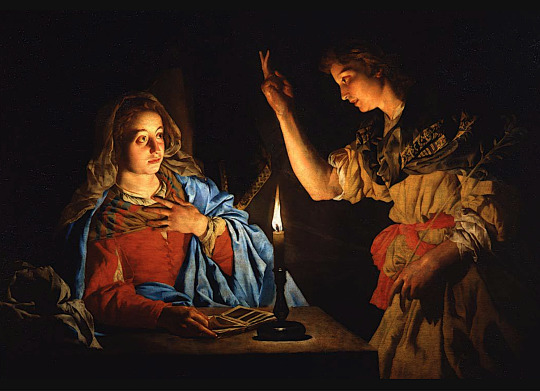


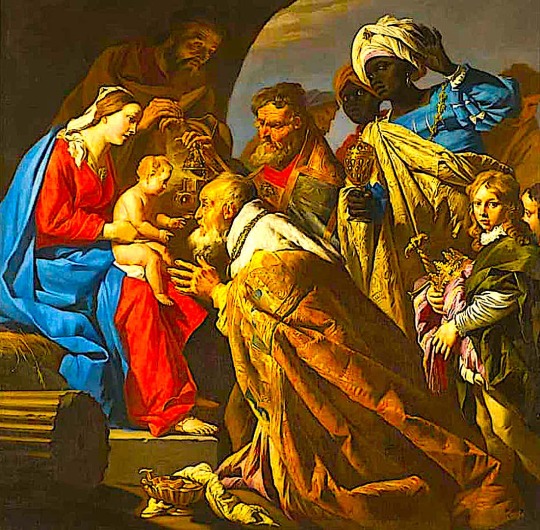
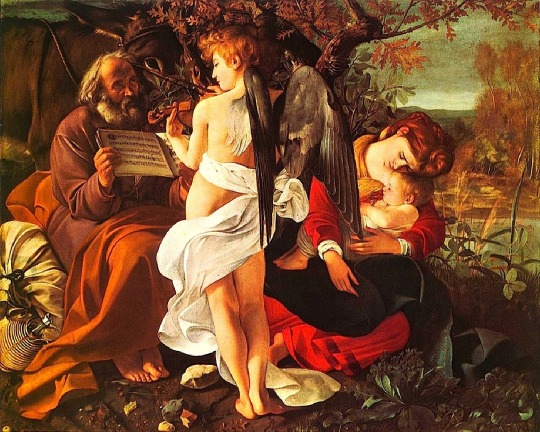
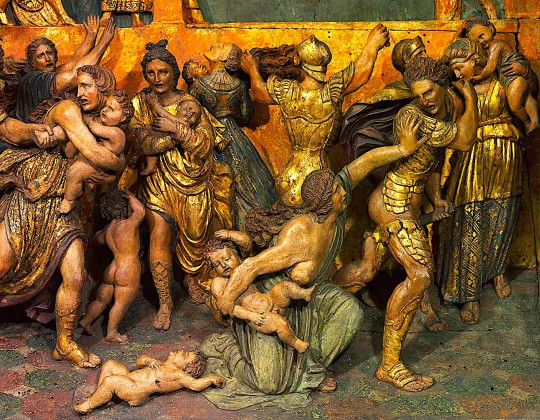
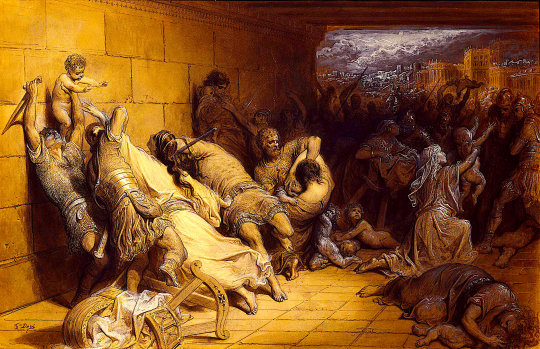
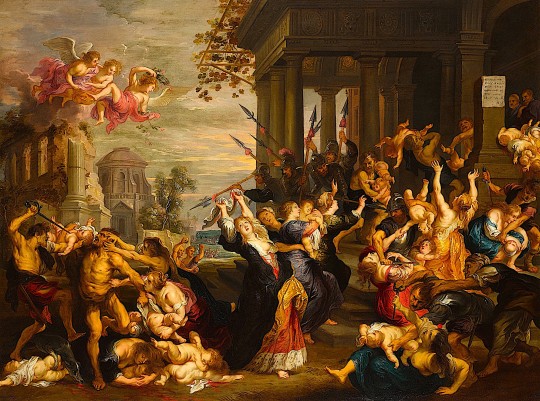
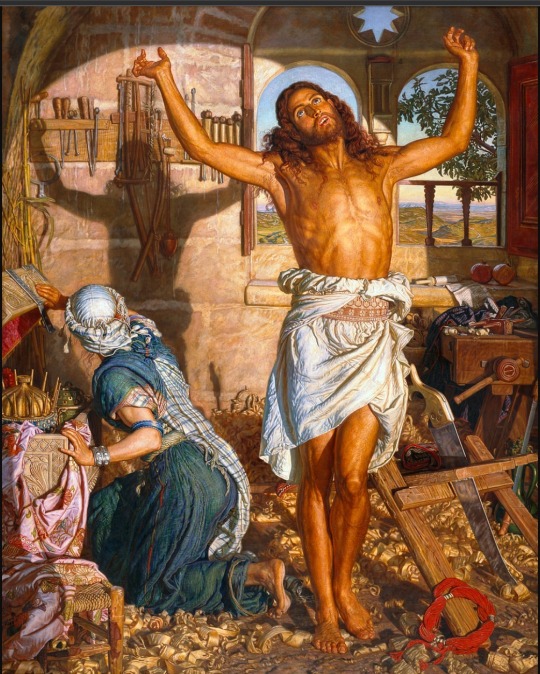
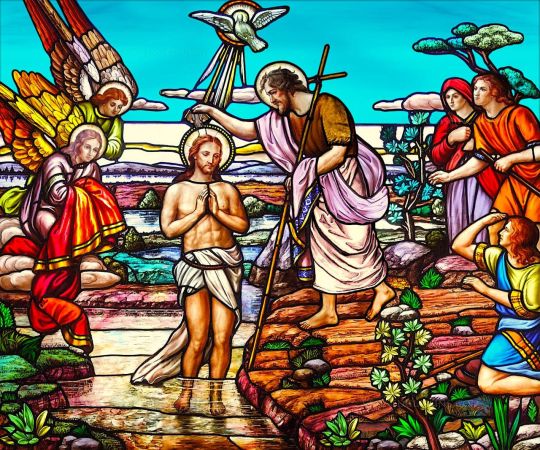
youtube
youtube
youtube
youtube
youtube
Gallery: 1 Hail Mary, Full Of Grace 2 My Soul Does Magnify The Lord 3 Shepherds Worship The Child 4 Adoration Of The Magi 5 The Flight Into Egypt 6 Rachel Weeping For Her Children 7 Massacre Of The Innocents 8 Herod Worships The Holy Child 9 The Shadow of Death 10 Baptism Of Yeshua
MESSIAH'S EASTERTIDE JUBILEE – revised & expanded Apr 21, 2023 – by David D. Fowler & Aeon 999
Welcome to MFF's 2022 Easter spectacular. Like our past efforts, this 7-part extravaganza features a well-stocked cornucopia of outstanding videos. Our purpose is to enhance the celebration of the glorious Eastertide tradition – from now, until the Eastern Orthodox Day Of Pentecost in June.
These items constitute the best available resources we could find online, representing many different views of Christ-based spirituality and artistic endeavors – as well as alternative spiritual paths, and articulate expressions of skepticism. We offer complete editions of many films, including secular productions that deal with themes such as the supernatural; good versus evil; human depravity; self-sacrifice; redemption; and superheroism, as a metaphor for salvation.
We present a generous spectrum of outstanding music – including rock, classical, black gospel, sacred choral, blues, jazz, and experimental performances. You'll also encounter a variety of hilarious videos, including some exceedingly irreverent items; and intense debates, focusing on fascinating and passionate takes on the myriad realities of Christ's impact on the world.
You’ll find a lot of iconic films, including BEN-HUR, THE MATRIX, LIFE OF BRIAN, LORD OF THE RINGS, HARRY POTTER AND THE PRISONER OF AZKABAN, BECKET, THE ROBE, LILIES OF THE FIELD, JESUS OF NAZARETH, AVENGERS ENDGAME, THE SEVENTH SEAL, THE MISSION, THE WIZARD OF OZ, JASON AND THE ARGONAUTS, THE WITCH, KING OF KINGS, THE MIRACLE MAKER, DOCTOR STRANGE, THE PASSION OF JOAN OF ARC, METROPOLIS, ELMER GANTRY, and HAMLET.
We also feature a number of less high-profile movies, such as MORTAL ENGINES, FAUST, DUNE, BARAKA, DAY OF WRATH, CONSTANTINE, STALKER, ORDET, WAR REQUIEM, JOHN CARTER OF MARS, THE WICKER MAN, INTOLERANCE, THE SACRIFICE, LESSONS OF DARKNESS, THE DAY CHRIST DIED, ANDREI RUBLEV, JESUS OF MONTREAL, NIGHT OF THE HUNTER, THE BOOK OF LIFE, THE MILL AND THE CROSS, TWIN PEAKS: FIRE WALK WITH ME, SILENCE, CLOUD ATLAS, and NOSTALGHIA.
You'll enjoy popular musicians, ranging from U2, BOB DYLAN, ELVIS PRESLEY, LEONARD COHEN, ARETHA FRANKLIN, BJORK, ALICE COOPER, JOHNNY CASH, JOAN BAEZ, and the ROLLING STONES, to BRYAN ADAMS, PRINCE, EMMYLOU HARRIS, TOM WAITS, DOLORES O'RIORDAN, JOHN LENNON, ANNIE LENNOX, BUFFY SAINTE MARIE, and BRUCE COCKBURN.
We also present legendary figures: PAUL ROBESON, WOODY GUTHRIE, ROSETTA THARPE, and MAHALIA JACKSON; and lesser-known musicians, such as IONA, PHIL OCHS, LOST DOGS, KATHY MATTEA, MARIA McKEE, KEITH GREEN, LARRY NORMAN, CAPTAIN BEEFHEART, the SWIRLING EDDIES, and the CHAMBERS BROTHERS.
We feature musicals: AMAHL AND THE NIGHT VISITORS, COTTON PATCH GOSPEL, JESUS CHRIST SUPERSTAR, THE GOSPEL AT COLONUS, and GODSPELL; jazz masters, such as JOHN COLTRANE, DUKE ELLINGTON, ARCHIE SHEPP, HORACE PARLAN, and LOUIS ARMSTRONG; and opera icons LUCIANO PAVAROTTI, TERESA STRATAS, and JESSYE NORMAN.
We showcase choral masterpieces by HANDEL, FAURE, MAHLER, BACH, BEETHOVEN, VERDI, BARBER, VIVALDI, ALBINONI, BRAHMS, HAYDN, ALLEGRI, BRITTEN, MOZART, BRUCKNER, PERGOLISI, IVES, VAUGHAN WILLIAMS, SCRIABIN, MENDELSSOHN, BERLIOZ, LISZT, TCHAIKOVSKY, RACHMANINOFF, and DVORAK. We also present the spectacular Bible-related visual works of CARAVAGGIO, GUSTAVE DORÉ, and MARC CHAGALL.
We explore controversial books, movies, and phenomena, such as: ZEITGEIST; THE GOD WHO WASN'T THERE; RELIGULOUS; MERE CHRISTIANITY; the PAGAN CHRIST; the SHROUD OF TURIN; the HOLY GRAIL; THE CELESTINE PROPHECY; THE DA VINCI CODE; the GOSPEL OF THOMAS; A COURSE IN MIRACLES; GNOSTICISM; THE SCREWTAPE LETTERS; PARADISE LOST; FLOWERS OF EVIL; and CHRISTIAN NATIONALISM.
Finally, we present a wide range of humor, from the likes of MONTY PYTHON, MEL BROOKS, LENNY BRUCE, NOT THE NINE O'CLOCK NEWS, GOOD OMENS, NEGATIVLAND, TOM LEHRER, LORD BUCKLEY, JOHN PRINE, FAMILY GUY, ROWAN ATKINSON, MIRACLE WORKERS, LUCIFER, PREACHER, CRACKED, BETTY BOWERS, VIC BERGER, and SATURDAY NIGHT LIVE.
We think you will get considerable entertainment from many of these materials – and maybe also encounter unexpected eloquence, edification, and enlightenment. We strive to offer works of art that will challenge people's thinking; motivate folks to rise above everyday petty concerns; inspire us all to maintain hope, love, encouragement, and dignity in this fragile world; and perhaps even help open-minded unbelievers find good reasons to believe that Christ is risen indeed.
So we invite you to kindly bookmark this post – and check out the sections below at your leisure. If you derive something of real value from our playlists, we would be delighted if you share them with your friends. We extend our best wishes for an uplifting exploration of spirituality, as the Easter season unfolds. God bless y'all!
Jubilee part 2: THE HOLY SPIRIT TRAVELING IN DISGUISE https://musemash.tumblr.com/post/46758040906/messiahs-jubilee-part-1-the-spirit-in-disguise Jubilee part 3: HEATHEN DANCE PARTY IN PURGATORY https://musemash.tumblr.com/post/164579528390/jubilee-part-3-heathen-dance-party-in-purgatory Jubilee part 4: HOPE IS STRONGER THAN DEATH https://musemash.tumblr.com/post/615204082966233088/hope-is-stronger-than-death-revised-updated Jubilee part 5: COLLISIONS OF ALL OUR TRUTHS https://musemash.tumblr.com/post/46757984172/messiahs-jubilee-part-2-collisions-of-all-truths Jubilee part 6: SHAPE SHIFTING MASQUES OF REDEMPTION https://musemash.tumblr.com/post/46757919841/messiahs-jubilee-part-3-masques-of-redemption Jubilee part 7: MAKING JOYFUL NOISES UNTO THE LORD https://musemash.tumblr.com/post/46757864172/messiahs-jubilee-part-4-joyful-noises-unto-the
11 notes
·
View notes
Text
Tanz Vs Dance, further gripes and headscratching.
Bc I truly cannot wrap my head around some of the decisions made for this adaptation.
I particularly want to talk about what they did to "Die Roten Stiefel/Das Gebet" As Sarah is leaving the inn Michael Crawford shows up in drag for some reason to give Sarah her boots. Sure, whatever, let's just get on with it.
The part that follows is pretty similar to the European version, Sarah and Alfred sing to each other, Sarah expresses her desire for adventure in the great wide somewhere, she gives Alfred the slip and runs off into the wilderness. If I had a criticism of this segment it would be that Sarah seems a little more interested in Alfred compared to the German version and the lyrics are kind of clumsy. But all in all it's not terrible.
Cool
youtube
But then we get to the prayer.
I will never understand why at the end of the Broadway version of "Die Roten Stiefel/Das Gebet" they have Rebecca cross herself catholic style and Sarah isn't even on stage.
In the European Version Rebecca and Sarah both pray at the same times. Sarah drops to her knees and she and her mother both cover their heads....
youtube
bc they're Jewish. Not coded or implied, but explicitly the Chagall family is Jewish. That's why crucifixes don't work on Sarah's father when he's turned.
That's not even mentioned in the Broadway version now that I think on it. Are they NOT Jewish here???
The lyrics are also really different in English, to the point that the meaning of the song has changed. Which is a real shame because this is one of the very few scenes in the Broadway version that doesn't suck. Mandy Gonzales had the chops to be a good Sarah and when they actually DO SOMETHING with the set and choreography it looks nice.
But whatever praise I give to this show I immediately have to take back because the whole prayer scene is a complete fuck up. It's the closer for the first act, and 2 major characters aren't present. The staging is boring as hell and they drop the momentum by cutting to Crawford half-assing his number.
youtube
Inexplicably after "Das Gebet" the Broadway version cuts straight to "Vor Dem Schloss" but it's Count Spaghettio singing it to Sarah, like he's trying to seduce her. But he literally did that in the opening act and then again during the invitation to the ball. Dude we get it, she just needs to "turn her face away from the garish light of day and listen to the music of the night..."
Why the fuck did they cast him, he is the worst thing about this musical DX
In the original "Vor Dem Schloss" is not about Sarah, it's about Alfred. Alfred and the professor show up to try and rescue Sarah. When they get there the Count sasses off at Abronsius, invites him and Alfred to stay, then the count tries to tempt Alfred over to the dark side. This is foreshadowing and subtle set up for the upcoming "Carpe Noctem" number, again, build up and pay off.
Unfortunately I couldn't find an isolated clip of this scene with English subs, but a fully subbed version of the play is on youtube for anyone to check out.
Regardless, the whole atmosphere is different and I think they did the broadway version a disservice by cutting out most of the interactions between Von Krolock and Alfred.
youtube
I can understand some changes being made for the sake of an adaptation but when you do alter scenes, cut songs and take moments away from characters you have to make sure you're not creating any gaps. The scenes in Tanz aren't just filler, you can't switch them around and give them to the wrong character without breaking the story.
#Tanz der Vampire#this is going to be a series#Sorry to all my poor mutuals#crimes were commited#this is a Tanz blog until I get it out of my system
8 notes
·
View notes
Text
cimetière
J’ai l’impression de te rendre visite comme on va au cimetière, en se préparant à arracher les mauvaises herbes et à refleurir les souvenirs. A te faire la conversation comme on parle à un mort. Je m’apprête à affecter l’entrain des jours passés respectant les codes de cette petite comédie du « je fais comme si tu étais toujours là ». Pourtant tu n’es plus là pour moi et je ne suis plus là pour toi. Si je disparaissais, tu ne le saurais sans doute pas. Si tu mourais je serais sans doute la dernière personne prévenue et cette pensée m’accompagne un instant comme un nuage spongieux.
Je voulais vivre dans un tableau de Chagall
1 note
·
View note
Text
Lachesis: One must always follow a certain etiquette when comporting oneself in public. How else would we be able to protect ourselves from boorish behaviour, from such unrefined acts...that is why one must always follow a code of conduct befitting one's station.
Lachesis @ Chagall: YOU'RE NOT MY KING!!! NOR ANYONE ELSE'S! RIGHT OF INHERITANCE OVER MERIT, MY PRIM AND PROPER ASS! YOU'RE NOT FIT TO GOVERN THE DIRT I WALK ON! COME DOWN HERE AND FACE ME LIKE A MAN YOU FILTHY, MANGY, POMPOUS PIECE OF SHIT! A DISGUSTING HUMAN BEING LIKE YOU HAS NO RIGHT TO RULE! FUCK THE POLICE!!!
#lach: ic#sorry if this posts twice lol#magic is everything! (crack)#except...not really...#i love the contrast in her between noble and rule breaker#caps lock
4 notes
·
View notes
Note
Sir Frederick, there are few knights that have your experience with steadfast loyalty and your knowledge of the cost of blind obedience. With this in mind, what would you say is a knight's duty if they realize their liege's orders are wrong but lack the capacity to sway them to a better path? Can a knight be morally obligated to set themselves against someone they once pledged lifelong loyalty to?

“Every knightly vow ever taken has shared three common elements: protect the innocent, defend your realm, and serve your liege. Simple, right? Well, as you pointed out: not so much. Say your liege wants you to slaughter the innocent. Or say your homeland has fallen under enemy control. Perhaps your liege is dead, and you are honour-bound to avenge them by routing a gang of murderers sheltered by the citizenry. What then?”

“The answers to these questions are what separates ordinary knights from true knights. I... Well, after a number of the things I have been through, I cannot rightly claim myself to be as true a knight as General Seth or Dame Titania. I have done things that will shame me until my dying day. And however inexcusable these things may have been, I did them because I believed I was following my vows. Taking new vows, serving new masters, and living by a code of my own cannot undo the past, but the past cannot undo what it is I choose to do in the present.”

“As I see things, good stranger, a knight isn’t just bound by their vows; a knight must integrate their vows with what is fundamentally right. There is no truer example of such a knight than Lord Eldigan the Lionheart. His wicked king forced his homeland into an unjust war, and twice did Lord Eldigan fall back to convince his liege that what they were doing was wrong. The first attempt cost the Lionheart his freedom, and the second cost him his life. In spite of that, though, Lord Eldigan stood valiantly to defend his realm and serve his liege as best as he could. He was merciful to the innocent, devoted to his homeland, and faithful unto death to the unworthy King Chagall. That is what it means to be a knight."

“So, if any of my lieges -- heavens forbid -- ever bade me to go against what I knew was right, I would counsel them in the opposite direction until they either came to their senses or struck my head from my shoulders. That is the knight I am today, and that is how I choose to live by my vows.”
#fire emblem#frederick answers#I'll probably go into Fred's past a little later#suffice to say: he's over the moon over how awesome he thinks his lieges are#there's a reason he's so devoted to them#and it isn't blind loyalty to the crown#long'queue#Anonymous
14 notes
·
View notes
Text
“In Gold We Trust”: dialogo con Marco Goldin, il Signore Grandi Mostre. Ha portato 11 milioni di persone davanti a Van Gogh, Vermeer, Monet…
L’arte è il racconto della vita e lui Marco Goldin, il Signore Grandi Mostre, emotività, pop e management ha passato la sua raccontare l’arte. Organizzando esposizioni, portando in Italia capolavori, scrivendo saggi, allestendo spettacoli teatrali. Maestri celebri, opere-icona, impressioni, Impressionisti e code impressionanti. Ogni mostra, un successo. Anni fa su Facebook spuntò un gruppo denominato «Quelli che vogliono diventare Marco Goldin». Alcuni critici contestano le sue scelte mainstream, ma lui tira dritto sulla sua linea, quella che parte da Treviso, dove è nato, nel 1961, e passa dalla laurea all’Università Ca’ Foscari di Venezia con tesi su Roberto Longhi scrittore e critico d’arte (110 e lode), lungo 400 esposizioni curate dal 1984 a oggi, attraversa la sua società di produzione di mostre – «Linea d’ombra» a là Conrad – e arriva dove vuole. Alla fine Goldin è l’unico che può ottenere certe opere da musei stranieri e certi finanziamenti dai privati. Di lui si fidano sindaci, direttori, collezionisti, prestatori, sponsor e pubblico. In «Gold» we trust.
Lui ha creduto nella passione e nelle arti-star. E unendole ha creato, a suo modo, un capolavoro. Portare tutti a vedere le sue mostre. Perché prima di essere le mostre su Van Gogh, su Gauguin, su Monet, le mostre curate da Goldin sono un modo di presentare se stesso attraverso i quadri di Van Gogh, di Gauguin, di Monet… Non sono mostre su. Ma mostre di. Marco Goldin. Uno che ti vien voglia di dirgli come Dino Risi a Nanni Moretti spostati, e fammi vedere la mostra.
Lei, le mostre d’arte, vorrebbero che le vedessero tutti.
Mi piace immaginare che le opere d’arte debbano essere appannaggio di un pubblico largo. E sono convinto che la cultura sia prima di tutto racconto e emozione, abbinati all’erudizione.
I suoi avversari storcono il naso davanti alle «emozioni».
Non è una guerra. Non ci sono avversari. Qualcuno separa scientificità e popolarità. Invece per me stanno insieme. Perché una mostra non può fare 300mila visitatori? Perché – invece che allineare uno dopo l’altro dei quadri – non creare un racconto?
Con le sue mostre ha raccontato i grandi temi del viaggio, dello sguardo, del paesaggio e della notte. Cosa sceglie?
Forse il paesaggio. Sono una grande sportivo, da quando avevo 15 anni. Mi alleno molto. Ciclismo, sci d’alpinismo, fondo. Discipline che ti preparano alla fatica e che ti permettono di stare a contatto con la natura. Amo talmente tanto stare all’aperto da ricercarlo anche al chiuso. Ho una passione per la raffigurazione della Natura. Ecco perché ho curato tante mostre sul paesaggio. Collego lo spirito e il lavoro.
Quando inizia per lei il racconto dell’arte?
Mia nonna dipingeva. A otto anni facevo il modello nel suo atelier, in un’altana veneziana di Treviso. Sono cresciuto respirando olio e trementina.
Da allora è stata una linea retta?
No, al liceo i miei interessi erano di tipo letterario. Scrivevo, leggevo poesia. Poi, iscritto a Lettere a Ca’ Foscari misi nel piano di studi Storia dell’arte contemporanea perché all’epoca con quell’esame potevi insegnare alle superiori, non si sa mai. Lì incontrai Giuseppe Mazzariol. Un professore molto particolare: entrava in aula un quarto d’ora dopo e andava via un quarto d’ora prima, ma le sue lezioni erano indimenticabili.
Il tipo di insegnante che ti affascina raccontando.
Ecco. Il suo corso era su Paul Klee, artista che peraltro oggi non amo particolarmente. Ma è lì che è iniziato tutto. Poi ho cominciato a scrivere per un settimanale di Treviso, città dove negli anni ’80 c’erano moltissime gallerie private: ogni settimana s’inaugurava una mostra. Ho iniziato così, frequentando i vernissage e i pittori. Poi ho cambiato piano di studi.
E la vita.
Sì, anche se in quel momento non lo sapevo. Comunque da allora l’arte è vita, passione, lavoro.
E business.
Nel mio lavoro ha avuto qualche successo, certo. In ogni caso non sono mancate perdite, anche pensati a volte.
Prima mostra curata?
Ottobre 1984, avevo 23 anni. In 35 anni di attività ho curato 400 mostre, cioè 11-12 all’anno, una al mese. Ma la media è così alta perché quando ero più giovane e lavoravo soprattutto sulla pittura italiana del ’900 tenevo un ritmo di 30-35 mostre all’anno, contemporaneamente su più sedi, pubblicando anche il catalogo. Me ne rendo conto: era una follia. Da tempo ne faccio una, al massimo due all’anno.
Curriculum?
Dal 1988 al 2002 ho diretto la Galleria comunale di Palazzo Sarcinelli a Conegliano. Dal 1988 al 2003 ho curato molte esposizioni per la Casa dei Carraresi di Treviso. Dal 1998 ho iniziato un ciclo di grandi esposizioni nel Veneto, Torino, Brescia, Bologna, in particolare sulla pittura francese dell’Ottocento. Ho insegnato allo IULM di Milano. Dal ’91 al ’95 ho scritto recensioni per il Giornale, con Montanelli e con Feltri.
Nel 1996 fonda «Linea d’ombra».
È la mia società che si occupa di organizzare mostre sia di ambito nazionale che internazionale.
Quanti visitatori, da allora?
In 23 anni 11 milioni di persone in tutto. Ho ottenuto prestiti da 1.200 fra musei, Fondazioni e collezioni private di tutti i cinque Continenti, per un totale di oltre 10mila opere portate in Italia, di 1.054 artisti diversi. Per nove anni una delle mie mostre è stata la più visitata d’Italia. E per quattro volte si è classificata tra le prime dieci più viste al mondo.
Numeri record, ma che non le sono stati perdonati.
Invidia? Chissà, qualcuno mi ha fatto passare come quello che ha banalizzato l’arte, ma ci sono in giro tante mostre pessime eppure nessuno ha avuto critiche così feroci.
Ci soffre?
No. Mai fatto mostre per calcolo, solo quelle che mi piacevano.
Il suo secolo d’elezione è il ’900.
In ambito italiano sì. Ma le più note restano quelle su Monet, gli Impressionisti, Van Gogh…
Alla Gran Guardia a Verona ha appena inaugurato “Il tempo di Giacometti da Chagall a Kandinsky”.
È l’esempio di quanto la passione prevalga sul business. Così come quella su Rodin lo scorso anno. Organizzare una mostra su Giacometti è antieconomico. Produrre questa mostra costa due milioni. C’è uno sponsor privato, che abbassa il rischio di impresa, pagando un quinto dei costi. Il resto dovrebbe arrivare dai biglietti di ingresso. Ci perderò…
Perché?
Perché tradizionalmente le mostre sulla scultura non funzionano. La gente ama guardare i quadri, non le statue.
Però la fa lo stesso.
È una mostra che sognavo da quando andavo all’università. Giacometti è il primo artista internazionale del ’900 che ha attirato la mia attenzione. È stato uno dei miei primi “amici” artisti, fin dagli anni dell’università quando giravo i musei di tutta Europa, e vedevo i suoi disegni prima ancora che le sue sculture. Di lui mi ha sempre colpito la sua forza della verità. Lui diceva: “L’arte mi interessa molto, ma la verità mi interessa infinitamente di più”.
Cosa significa?
Che prima devi essere una persona vera di fronte alle persone, agli oggetti, al paesaggio che vuoi ritrarre. E dopo, verso l’arte. Il risultato sono le sue sculture uniche. Le guardi, eccole qui: la Grande femme debout, L’Homme qui marche. Quella è la Femme de Venise che fu esposta nel 1956 alla Biennale di Venezia e che riscosse un successo incredibile.
Di critica. Ma perché al grande pubblico le sculture non piacciono?
Perché la gente ama il colore. E nelle sculture non c’è. Tutto qui. È il motivo per cui Van Gogh è stra-amato dal grande pubblico e Giacometti nonostante le valutazioni stellari resta poco conosciuto. Da una parte un colore urlato, dall’altra una forma che fa pensare. Tra le due cose, dal punto di vista dell’empatia dello spettatore medio, non c’è gara.
E infatti nel 2020 farà un’altra mostra su Van Gogh.
A Padova, su Van Gogh e il suo tempo. Per farle capire come si può intercettare l’interesse del pubblico prima di aprire una mostra, le racconto questo. Sulla pagina Facebook di Linea d’ombra stiamo postando alcune foto delle opere che porteremo in mostra. Bene. L’autoritratto col cappello di feltro, stranoto, è stata la prima immagine pubblicata. Poi abbiamo messo in rete un paesaggio di Arles con i mandorli in fiore. La seconda opera ha avuto il doppio dei like rispetto alla prima. Cosa significa? Che tra un ritratto, anche iconico, e un paesaggio, suscita più emozioni il paesaggio.
È per questo che gli Impressionisti fanno sempre boom?
Certo. Perché gli Impressionisti hanno dipinto il paesaggio al suo grado massimo di bellezza.
“L’impressionismo e l’età di Van Gogh” del 2003 a Treviso totalizzò 600mila visitatori. Un record.
Nel 2005 presentai poi 80 Van Gogh e 70 Gauguin tutti insieme, una cosa da Metropolitan. Risultato: 541mila biglietti. A Brescia…
Per fare una mostra di successo cosa serve?
Primo: studiare.
Secondo?
Le relazioni internazionali. Spesso servono più dei soldi».
La sua prima conoscenza “giusta”?
Tanti anni fa. Un giovane curatore del Musée d’Orsay di Parigi, conosciuto qui in Italia, Radolphe Rapetti, che poi andò a lavorare a Strasburgo. Fu lui a presentarmi il direttore dell’Orsay, Henry Loyrette. Io stavo organizzando una mostra dedicata a Roberto Tassi, un grande critico dell’arte e grande scrittore, al pari di Longhi e Testori. Avevo in mente una grande mostra, con prestiti internazionali: tra l’altro Tassi, morto nel 1996, era molto apprezzato in Francia. Quando spiegai a Loyrette il progetto, mi disse: cosa ti serve? Prendi questo, un Cézanne, e questo, un Degas, e questo, un Monet… Tutti artisti sui quali Tassi aveva scritto molto. E così, io, piccolo provinciale di Treviso, me ne andai dal museo d’Orsay con in tasca la promessa di prestiti eccezionali. Successivamente Loyrette divenne direttore del Louvre…
E visto il successo della mostra su Tassi, fu più facile ottenere altri prestiti anche da lì.
All’estero ti giudicano anche sui numeri che fai. Portare a una mostra 200mila visitatori non è come portarne 50mila. Per i musei è un investimento in termine di immagine.
Eravamo arrivati al secondo fattore di successo. Il terzo?
Assolutamente la qualità delle opere: a volte si annunciano mostre con nomi altisonanti ma con quadri modesti.
E poi?
Certo, i grandi nomi aiutano, quelli che la gente riconosce. Monet, Van Gogh, Cézanne, Gauguin, Renoir, Degas, Manet, Courbet… O Picasso, o Vermeer…
Vermeer. Goldin è «quello» che portò “La ragazza con orecchino di perla” in Italia.
Grazie alle relazioni internazionali costruite negli anni. Era il 2011. Mi chiama il direttore del museo Kröller-Müller di Otterlo, con il quale ho rapporti di amicizia da vent’anni. Mi dice: Lo sai che chiudono il museo Mauritshuis all’Aia per restauri? Per due anni faranno viaggiare una selezione delle opere in giro per il mondo. Ti interessa? Immaginati se non mi interessava! Faccio di tutto. Vado all’Aia. Mi dicono che la Ragazza andrà solo in Giappone e negli Usa. Occasione persa, mi dico. Poi però nel 2012 il direttore del Mauritshuis mi ricontatta dicendomi che hanno deciso di aggiungere una tappa, ma le richieste sono tantissime, però ricordandosi che ero stato il primo a farsi avanti mi offre la possibilità, a patto che la città fosse importante. E mi dà tre giorni di tempo. Sufficienti per accordarmi con Bologna. Dove l’ho portata.
A Palazzo Fava, nel 2014. Fu la «mostra delle mostre».
Battuto ogni record. In media abbiamo avuto 3200 entrate al giorno, e mai un giorno sotto i 2mila, nemmeno al lunedì. Fu la mostra più visitata nel 2014 con 342mila visitatori in soli cento giorni. E sì che gli ingressi erano contingentati per via delle dimensioni di Palazzo Fava.
Qualità, grandi nomi. E Il resto?
Il resto è comunicazione.
Campo in cui Lei è il numero uno.
Non lo sono, davvero. Però ho capito presto che la sola comunicazione istituzionale non basta. L’arte va raccontata al pubblico, e le mostre ai giornalisti.
Lei è stato il primo a non fare le conferenze stampa seduto, ma nelle sale con la stampa al seguito.
Se è per quello nel 2001 e 2002 per due mostre alla Casa dei Carraresi a Treviso noleggiai un aereo e portai cento giornalisti nei musei di Oslo e Edimburgo per vedere le collezioni da cui sarebbero arrivate alcune delle opere esposte. Da allora lo faccio spesso. Prima di aprire la mostra su Van Gogh a Padova, l’anno prossimo, porto tutti a Otterlo, in Olanda, al museo Kröller-Müller dove si trova una delle maggiori collezioni di Van Gogh al mondo.
Ripeteranno che sarà la solita mega mostra blockbuster. Molto d’effetto e poco scientifica.
E io ripeterò che invece si possono tenere insieme emozione e scientificità. Tra me e un erudito l’unica differenza è il modo in cui raccontiamo la stessa materia. E comunque, prima di criticare senza avere visto, meglio vedere e poi parlare. A Padova si vedranno prestiti assolutamente sorprendenti, altro che mostra blockbuster.
Dicono che Lei si prepara in maniera maniacale sia per curare una mostra sia per scrivere un saggio.
Per questa mostra su Giacometti ho preso centinaia di pagine di appunti. E poi vado sempre nei luoghi in cui gli artisti hanno creato, per provare a capirli meglio, per vedere le cose come le vedevano loro, per cercare un’empatia. Mentre preparavo la mostra sono stato al passo del Maloja tra la Val Bregaglia e l’Engadina: volevo camminare sui sentieri sui quali aveva passeggiato Giacometti, guardare i paesaggi che ha dipinto: il Lago di Sils, il ghiacciaio del Forno, i picchi coperti di abetaie… Solo se vedi quegli alberi snelli e slanciatissimi capisci da dove arrivano gli uomini e le donne filiformi delle sculture di Giacometti. È con questo spirito che nasce la mostra. E che la rende diversa da tutte le altre.
Oggi invece dicono che le mostre siano tutte uguali. Anzi: che l’Italia è diventata un mostrificio.
Un po’ è vero. E poi negli ultimi anni la qualità si è abbassata decisamente. Gli enti pubblici hanno sempre meno soldi, gli sponsor privati sono in fuga, portare grandi opere e grandi nomi in Italia costa troppo, si offre sempre meno, si fanno esposizioni con cinque opere belle e 50 modeste, il pubblico è meno invogliato, si riduce il numero di biglietti e l’intero circuito delle mostre va in crisi.
La sua mostra più bella?
Forse “America! Storie di pittura dal Nuovo Mondo” al Museo di Santa Giulia a Brescia, 2007-08. Tre anni di lavoro, venti viaggi negli Usa: per raccontare il mito della Frontiera, degli spazi immensi, della vita degli indiani e dei cowboy, esposi 250 quadri prestati da 40 musei americani, più altrettanti pezzi fra fotografie d’epoca e oggetti rituali dei nativi. Una cosa mai fatta prima da noi. A una settimana dall’apertura della mostra c’erano già 80mila prenotazioni. Abbiamo chiuso a 205mila. La Tate di Londra e Amsterdam, sullo stesso tema, erano arrivati a 100mila biglietti.
Allora lei attivò una micidiale macchina di eventi per attirare pubblico: reading, film, concerti, testimonial: Mike Bongiorno, Dan Peterson, Battiato, Salvatores, Volo…
La comunicazione è importante. Ma non puoi comunicare il niente. Se hai qualcosa di bello, lo devi raccontare al meglio, tutto qui.
Luigi Mascheroni
*La presente intervista è la versione integrale di quella apparsa il 16 dicembre 2019 su ‘il Giornale’, in quel caso tagliata per ragioni di spazio, e pubblicata col titolo: “Posavo per mia nonna pittrice. Ora curo mostre da record”.
L'articolo “In Gold We Trust”: dialogo con Marco Goldin, il Signore Grandi Mostre. Ha portato 11 milioni di persone davanti a Van Gogh, Vermeer, Monet… proviene da Pangea.
from pangea.news https://ift.tt/34E93fl
1 note
·
View note
Text
332.
Giotto: Have you fallen? >> I don’t fall so much as I saunter vaguely downwards.
Raphael: Is your face like a question? >> I think people assume it’s an answer. They think looking at it will tell them something about me, what I’m feeling, how I think. Unfortunately for them, my face kind of just does stuff on its own, because I don’t always bother supervising it. I’m not trying to tell you anything with my face. Don’t look to it for answers. Carpaccio: Do you do dandy? >> I am a dandy doing quite dandy, thank you.
Michelangelo: Just how gay are you? >> Well, you know, I’m mostly in a neutral mood, not really excessively happy, so I’d say I’m... faintly gay.
Leonardo: What is your most interesting invention? >> I haven’t invented anything. All my so-called creations are really just transformations, or nudges towards transcendence.
Caravaggio: What kind of person excites your desires? >> A person who is passionate about themselves and about me, and therefore passionate about what we become when we’re together. A person whose vulnerability looks like strength and whose crystalline light is coexistent with a deep darkness. A person who takes nothing seriously, but not because they are derisive of everything. A person who isn’t afraid to exist -- or, better yet, to thrive.
Uccello: What lies in your darkest recesses? >> Hunger and rage and love.
Di Cosimo: What beasts are you? >> All of them -- hunter and hunted, tame and feral, knowing and unknowing.
Breughel: What kind of community matters to you? >> The kind that isn’t dependent on ideology or social identity, but the kind where “like calls to like” references something even less tangible and less divisible.
Holbein: What does politics mean to you? >> It’s all a dance, innit? But I prefer to sit this one out.
Hilliard: What would you like to say to a pretty young man? >> It’s pretty old men that I’d like to say something to, if we’re honest. Youth, for all its charms, just isn’t as interesting.
Gentileschi: What defiance drives you? >> Defiance of alienation, of not being wanted -- the defiance to thrive despite the world’s wish that I wouldn’t.
Goya: What keeps you going in the face of bleak times? >> Despite everything that has been set against me, I remain, and I haven’t drowned in suffering yet. Ain’t likely that I will now. (Also, “if you’re in Hell, keep going” is extremely good advice. Can’t praise it enough.)
Rembrandt: How would a telling portrait of you look? >> Like a black hole.
Vermeer: What is whispered in the quiet spaces of your soul? >> The source code.
Chardin: What do you think of when you are still? >> What it will feel like to die. (I’m not even being edgy here, it always pops into my head at some point if I remain idle long enough.)
Durer: What details of the natural world do you treasure? >> Ecological synergy. The colour spectrum. How things can be both so tiny and so influential.
Hokusai: What overwhelms you? In a good way? In a bad way? >> I am overwhelmed by an abundance of sensory stimuli, by my desires, by the expansiveness of existence, by how much stuff (information, particularly) there is in the universe, by the knowledge of mortality.
Blake: When did you last see an angel? >> Tobias has been gone a long time... at least 6 years. I miss him a lot.
Turner: What moments of transcendence have you experienced? >> I’ve transcended the knowledge and recognition of physical reality with drugs. But that’s not nearly as interesting as the everyday transcendence of banality and social pressure and bleakness.
Cezanne: What is your ideal landscape? >> Vast, mercurial, many-splendored.
Monet: What place makes you feel tranquil? >> Silence and light.
Gaugin: What is exotic to you? >> Nothing. All things are recognisable in some sense or another.
Chagall: What kind of magic do you wish to summon? >> It’s not a matter of wishing. I summon it every time I use language, every time I go inworld, every time I spread my arms to welcome whatever comes.
Modigliani: What is your idea of sexy? >> It will always be passion -- but not the loud, brassy, self-declarative kind that burns out as quickly as it flares up. This passion devours everything, but it is slow and quiet about it. You don’t notice how intense it’s been until you’re already devoured, and by that point the devouring is a terrible joy.
Munch: What makes you scream? >> Emptiness, the desire for nothing, the joy of nothing. The ceaseless droning of banality. Apathy beyond reason.
Picasso: What would you like to change into? >> Whatever it is, I am already changing into it. I am always changing into it.
Dali: How can you avoid being corrupted by money? >> I assume I have not been corrupted by money because I have never known what it feels like to have an abundance of it, and to feel the power of classism working in my favour instead of to my detriment. I imagine that my incorruptibility is a product of luck more than it is a product of any virtue of my own.
Klee: What shape are you? >> I am always a spiral with no end, but I am also always a single, vicious, exclamatory gash in infinity.
Kahlo: What kind of genius are you? >> The irreverent kind.
Mondrian: How minimal do you wish to be? >> I can’t be minimal. I am already devoted to being the maximum.
Hepworth: How shaped are you? >> Incidentally.
Hoch: What would a collage representing you contain? >> I actually don’t make collages because of this reason. My first instinct would be to make one representing myself, and then I’d freeze because... where would I even begin? What do I even exclude...?
Ernst: What dream would you like to live in? >> I live in multiple realms, but the dreamscape holds very little for me.
Carrington: What drives your dreams? >> A certain level of consciousness, I’d imagine.
Emin: What would you like to do in bed? >> Sleep, I suppose. But fucking isn’t out of the question.
Brooks: How elegant are you? >> As elegant as a spider weaving yarns in its web.
2 notes
·
View notes
Text
#TheElectroExhibition
The exhibition offers the public a visual and audio sensory experience, exploring electronic music through four key aspects. The first section, entitled Man & Woman-Machine, focuses on the notion of innovation, covering the ground-breaking instruments and revolutionary technologies in the genre, and its visionary artists, composers, and sound engineers. The second section, Dancefloor, focuses on the practice of dance, exploring the cities, codes, tribes, parties, and clubs that have marked the history and evolution of electronic music. The third section, Mix & Remix, examines the work and practice of the DJ, major figures in deejaying, the practice and aesthetics of sampling and remixing, and correlations in the visual arts. The fourth section, Imagination & Utopias, explores some of the key aesthetic domains that have marked the history of the genre (futurism, geometric abstraction, science fiction). It also examines the more political and societal aspects by evoking the spirit of protest and the counter-culture associated with electronic music.
The Philharmonie de Paris, an institution maintained by the City of Paris with the support of the Ile-de-France Region, encompasses all the activities carried out at both the Cité de la Musique and the new building beside it, designed by Jean Nouvel. It includes the Musée de la Musique, home to one of the most prestigious collections of antique instruments and artworks relating to the history of music. The museum also presents temporary exhibitions twice a year. Some of these projects are part of a cycle of historical exhibitions offering a rereading of the history of art through the prism of musical culture: “Figures de la Passion” (2001), “L’invention du sentiment” (2002), “Le IIIe Reich et la musique” (2004), “Wagner, visions d’artistes” (2007), “Paul Klee, Polyphonies” (2011), “Marc Chagall, Le Triomphe de la Musique” (2015). Other exhibitions focus on the musical arena of the 20th century, major currents in popular music, or emblematic figures: “Jimi Hendrix on Stage” (2002), “Pink Floyd Interstellar” (2003), John Lennon (2003), “Gainsbourg” (2008), “Miles Davis” (2010), “Bob Dylan, l’explosion rock 61-66” (2012), “Euro-Punk” (2013), “David Bowie Is” (2015), “New York Extravaganza: The Velvet Underground” (2016) and “Jamaïca Jamaïca” (2017).
4 notes
·
View notes
Text
Three Tips on How to Set Up a Business in Thailand
New Post has been published on https://wr1tepress.com/three-tips-on-how-to-set-up-a-business-in-thailand/
Three Tips on How to Set Up a Business in Thailand
There are many great places in the world to setup businesses today. With the internet boom and the subsequent online riches that people have found, as well as audio codes which encode speech allowing transmission over an IP network as digital audio via an audio stream.
Famous artists paintings have earned world wide recognition in different periods of times. Famous painters paintings truly an asset for fine arts. There have been a great number of famous painters in different parts of the world in different periods of times. These include Marc Chagall, Salvador Dali, Leonardo Da Vinci, Paul Klee, Henri Matisse,Claude Monet, Pablo Picasso,Pierre Auguste Renoir,Henri Rousseau,Henri de Toulouse-Lautrec,Vincent Van Gogh,Andy Warhol.
Yo Picasso
Famous abstract paintings present the fine art at the highest level.
Famous abstract artists have been gratly greatly appreciated for their famous abstract oil paintings.
Picasso is one of the most famous abstract painter. Picasso became very famous because he work in multiple styles.
Famous paintings of Picasso are Guernica ,Three Musicians,The Three Dancers and Self Portrait: Yo Picasso.
Picasso famous paintings have earned him worldwide recognition.
Many famous flower paintings have been created by the outstanding flower painters. Famous Floral Oil Paintings are in wide range of styles. Famous floral fine art paintings are exquisite. Famous landscape paintings are the master pieces of fine art. Famous Landscape painters have created a great number of famous landscape paintings. Famous Landscape art has greatly been admired in all the periods of times. Famous contemporary landscape painters have successfully attained the mastery in the landscape art.
Still life fruit paintings and fruit bowl paintings make the famous fruit paintings. The highly skilled artists have also created the most famous paintings of rotting fruit. The modern famous artists are successful creating the masterpieces of still fruit oil paintings and oil pastel fruit paintings.
Famous still Life art depicts drinking glasses, foodstuffs, pipes, books and so on. Famous Still life paintings are indeed the master pieces of fine art. Woman portrait paintings make the famous portrait paintings. There are also famous portrait paintings of men. Famous portrait paintings of Oscar dela hova have been greatly appreciated. Japanese women portrait paintings are very popular in Japanese culture. In addition to women portrait paintings and portrait paintings of men, there are many famous pet portrait paintings and famous portrait paintings of houses and famous paintings of sports cars.
Famous Islamic paintings of holy places and the famous islamic calligraphy of the holy verses have been truly represent the muslim art. Famous muslim artists have developed mastery of Islamic art calligraphy. The famous Islamic paintings include the paintings of the Holy places such as Khana kaaba, Masjid-e-Nabvi and other famous mosques and shrines. Famous Islamic art is fascinating and has always been appreciated. The famous Islamic art galleries have produced a great number of famous muslim painters and famous muslim calligraphist.
Famous modern galleries have produced the famous contemporary artists who have created many famous contemporary paintings. Famous oil paintings reproduction are also created in these famous galleries.
In addition to above styles, there are many famous paintings of other subjects. These include famous war paintings, famous paintings of jesus, famous figure paintings, religious famous paintings, famous paintings romantic, famous battle paintings, famous military paintings, famous sunset paintings, famous paintings of women, famous paintings of love, famous water paintings, famous acrylic paintings, famous paintings of buildings, famous dance paintings, famous dragon paintings, famous black paintings, famous paintings in the fall, famous paintings of cats, famous paintings of children, famous paintings of friends, famous paintings of christinaity, famous paintings of jesus and famous paintings of humanity. There are also famous native American paintings and famous Spanish paintings.
0 notes
Text
Timeline of his famous art pieces
- 1919 Had Gadya
"Had Gadya" is a song that is sung by Jewish families on the first evening of Passover. It tells the tale of a billy goat (representing the Jewish people) who is attacked by a cat, which is in turn attacked by a dog. These animals represent the oppressors of Jews throughout history. Lissitzky originally created gouache paintings of the ten animals, Had Gadya is a painting in a fluid manner, reminiscent of the style of Marc Chagall. This 1919 version, created for a children's book, features quaint, naturalistic animals contained within curvilinear compartments that overlap. These geometric elements - harbingers in a sense - speak not to the overt simplicity of Lissitzky's later style, but they also create a sense of movement within the composition.
- 1919 Beat the Whites with the Red Wedge
Beat the Whites with the Red Wedge is one of Lissitzky's earliest attempts at propagandistic art. He produced this politically charged work in support of the Red Army shortly after the Bolsheviks had waged their revolution in 1917. The red wedge symbolized the revolutionaries, who were penetrating the anti-Communist White Army. Here Lissitzky uses his signature coded color combination of red, white and black, which reinforces the message indicated by the work's title. Colors and shapes take on directly symbolic significance. For example, the smooth, curvilinear walls of the white circle are pierced by the sharp point of the red triangle: the Red Army has pierced the defenses of the White Army. Dramatic color contrasts also create confusion regarding space-which area is positive? Which is negative? Meanwhile, small geometric forms in the limited color scheme float like tiny projectiles through the space along with text. Here, basic forms combine with actual text: painting and typography are fused. This work is an important precursor to Lissitzky's Prouns, when Suprematist art moved onto a three-dimensional visual plain.
- 1925 Proun 99
Lissitzky's Prounen or Proun work, which spanned a variety of media from painting and illustration to physical installation, was the artist's effort to create three-dimensional environments in which two-dimensional shapes could exist in direct contrast to the space they inhabited. The end result for Lissitzky was ideally to create an ongoing tension between open, negative, three-dimensional space and flat, purely abstract, geometric forms. Painting and drawing, which had formerly existed independently of the three-dimensional media of sculpture and architecture, could now be fused to them to create new, integrated forms - ideally, the futuristic, Suprematist-style buildings Lissitzky envisioned.
- 1929 USSR, Russische Ausstellung
This poster was created for a 1929 exhibition at the Kunstwerbemuseum or Museum of Decorative Arts in Zurich. Lissitzky's Constructivist art and his political beliefs had become virtually interchangeable at this point in his career. In this work, the two colossal busts of a man and a woman loom over the sprawling horizontal structure. These figures are fused to emphasize the equality of the sexes in the Communist idiom and they are the essence of the State. Lissitzky had long envisioned his countrymen rising to new heights, both physically and spiritually.
- 1930 The Runner
Lissitzky once wrote of photography, "...photography possesses properties not available to painting. These properties lie in the photographic material itself and it is essential for us to develop them in order to make photography truly into art." With The Runner, Lissitzky converted his 1926 gelatin silver print Runner in the City into a stunning new visual reference to the modern celebration of speed and dynamism by splicing the photo into equal, vertical sections. The segmented photo mimics the effect of perceiving objects in motion (the objects are moving and/or the viewer is also in motion): there is a sense of visual fragmentation as one glimpses the parts rather than the whole. Lissitzky's effort to make a form of media then considered trivial into high art was in fact another evolutionary step for the artist's own Constructivist style. The prevailing idea was to construct something grand and utterly new, and in this sense, the very notion of photography as a pure art form, or what the Soviets regarded as a "medium for enlightenment," was something truly avant-garde.
- 1932 The print shop of Ogoniok
For Lissitzky, architecture was an enduring passion. Ironically, in some regards his passion for architecture was also his greatest challenge to his own productivity. His utopian aspirations were often realized in Lissitzky's sketches and blueprints for buildings that would have been impossible to construct. In this renderings, towering monoliths seem to float weightlessly in mid-air, defying gravity and denying very real considerations (such as budget constraints). Not without a sense of the practical, Lissitzky modified his architectural visions. The print shop for the magazine Ogoniok in Moscow that was commissioned in 1932 stands as Lissitzky's sole extant work of architecture. Unfortunately the actual building is far from what he imagined, containing virtually none of the horizontal skyscraper elements that became Lissitzky's signature design.
Corresponding pieces of art :

0 notes
Note
book asks: 3-6!
hey babe! happy new year and thanks for the ask!
1. What were your top five books of the year?
I did two lists, one for fiction and one for non-fiction. also just so happens that those are all the books I read this year. both surprised i managed to read that many and that all 5 fiction books made the list: i seem to have made some good reading choices. also: the pandemic made the years blurr together so i might have read at least one of the books in 2020...
Fiction
Han Kang: Human Acts (just excellent. went through so many emotions reading this. one part reminded me of mats wahl’s the invisible. german title is some excellent translation work since “Menschenwerk” can also translate to man-made)
Ursula K. Le Guin: Stories (finally read some more of her oevre. briliant)
Jacek Dehnel: Saturn. Black Paintings From The Lives Of The Men In The Goya Family (creepy and entertaining and just some excellent hypothesising on the father son relationship )
Kazuo Ishiguro: Klara and the Sun (very fun read but melancholic. I was definitely missing out since this is the first book of him that i’ve read)
Diana Wynne Jones: Howl’s Moving Castle (highly entertaining, especially after watching the ghibli rendition first. might have read this in 2020...no idea)
Non-Fiction
Katharina Pistors: The Code of Capital (got hyped a lot. a bit superficial - which was to be expected - but does deliver what it promises. liked her ribbing marxists by telling them that they’re too optimistic about capitalism. interesting proposal on how to define capital and how "the" law is used to protect and make it)
Grace Blakeley: Stolen (impressive, particularly considering her age. bit wishy-washy for my taste but it is supposed to be a lighter read, great summary of great britain’s finance history with contextualization)
Mathew Lawrence/Laurie Laybourn-Langton: Planet on Fire (pretty good overview on the current climate situation with advice on how to not lose hope. I read “The Future Earth” by Eric Holthaus first since it got recommended to me and was very disappointed in that one. Funnily enough, two books on the same topic but only Planet on Fire really dissected it in a way that made me feel like I had taken sth away from reading it.
Linda Scott: The Double X Economy (wow, the English title is unfortunate, the german title reads “The female/feminine capital”. overall quite interesting but somethings stumped me a bit and I still have to look up and cross-reference some things)
2. Did you discover any new authors that you love this year?
Han Kang. She is the new darling of the feuilleton here and has gotten some serios hype, but I was impressed by Human Acts. Very distinct stylistic choices that cut very deep. Just read that her new book (no English title yet) will be about the Jeju uprising in 1948 and I cannot wait to read it. Human Acts really stuck with me so I will definitely read her other works.
3. What genre did you read the most of?
Besides the books mentioned above I read many papers and legal texts so non-fiction wins by a big margin. Other than that a surprising amount of science fiction novels, considering I usually don't enjoy that genre that much.
4. Was there anything you meant to read, but never got to?
Ahahaha, soso much. This is only counting the books i already own (not my overall to-read list)
Ulrich Breuer: “Ungeschickt” Eine Fallgeschichte der deutschen Literatur (”Awkwardness” a case study of german literature) → super embarrassing but I ordered this because I thought the topic was intriguing without closely checking the details, but it turned out to have 800 pages and was super expensive....I still hope that it will be an interesting read once I start it.
Dietmar von der Pforten: Rechtsethik (legal ethics) → slowly making my way through it with the added issue of forgetting prior sections when I put it down for too long
more short stories by kleist and brecht, Bella Chagall "Burning Lights", Milan Kundera "The unbearable lightness of being", Matayoshi Naoki "火花 (Spark)", Wolfgang Reinhard "Die Unterwerfung der Welt (the subjugation of the world)"
book asks
1 note
·
View note